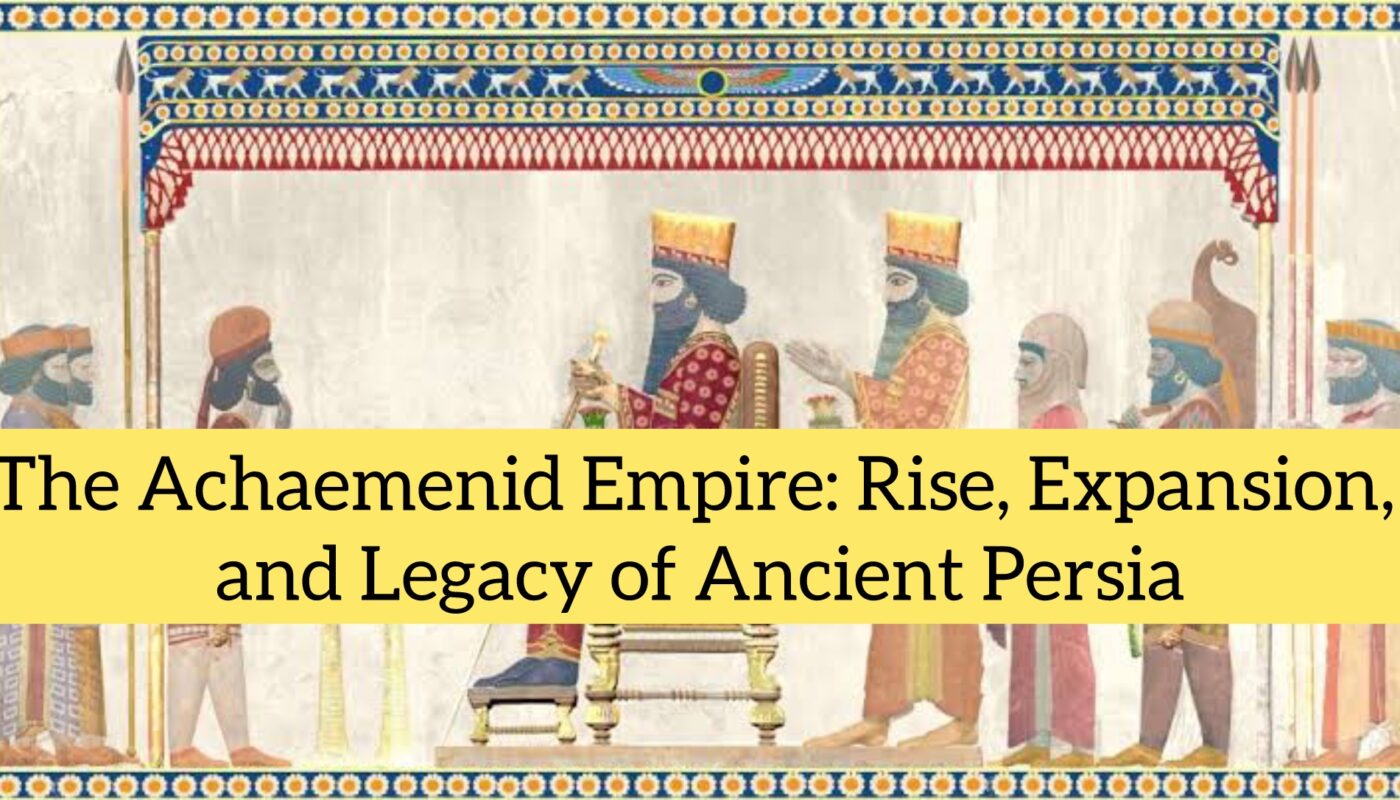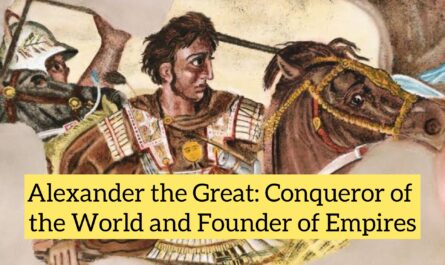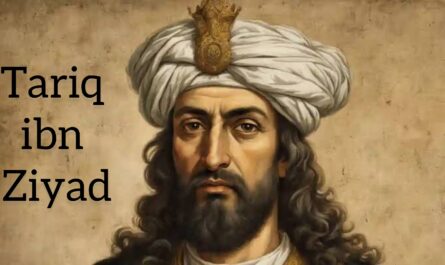Introduction
The Achaemenid Empire (c. 550–330 BCE), founded by Cyrus the Great, was the first and one of the greatest Persian empires in history. At its height, it stretched from the Balkans and Eastern Europe to the Indus Valley, making it the largest empire the world had seen at the time. Known for its innovative administration, religious tolerance, and monumental architecture, the Achaemenid Empire left a profound mark on global history, culture, and governance.
This ancient superpower not only ruled over diverse peoples and cultures but also laid the groundwork for many aspects of modern statecraft and infrastructure, such as provincial governance, taxation systems, and road networks.
Origins of the Achaemenid Empire
The Achaemenid Dynasty
The name “Achaemenid” comes from Achaemenes, a semi-legendary ancestor of the Persian royal family. The dynasty rose to prominence in Persis (modern-day Fars, Iran).
Rise of Cyrus the Great
The true founder of the empire, Cyrus II (Cyrus the Great), reigned from c. 559–530 BCE. He united the Persian tribes and overthrew the Median Empire, then rapidly expanded his territory to include:
-
Lydia in Asia Minor (modern Turkey)
-
Babylonia in Mesopotamia (modern Iraq)
-
Parts of Central Asia and the Indus Valley
His policies of tolerance and diplomacy, especially his treatment of conquered peoples, earned him reverence even among his former enemies.
Major Rulers of the Achaemenid Empire
1. Cyrus the Great (r. 559–530 BCE)
-
Founded the empire
-
Issued the Cyrus Cylinder, considered by some as the first charter of human rights
-
Freed the Jews from Babylonian captivity and allowed them to return to Jerusalem
2. Cambyses II (r. 530–522 BCE)
-
Son of Cyrus
-
Conquered Egypt, adding it to the empire
-
Known for the Battle of Pelusium and the eventual occupation of Memphis
3. Darius I (The Great) (r. 522–486 BCE)
-
Reorganized the empire into satrapies (provinces)
-
Built the Royal Road for faster communication
-
Introduced standardized currency and legal systems
-
Initiated major construction projects like Persepolis
-
Invaded Greece but was defeated at the Battle of Marathon (490 BCE)
4. Xerxes I (r. 486–465 BCE)
-
Son of Darius I
-
Led the second Persian invasion of Greece
-
Won at Thermopylae but lost at Salamis and Plataea
-
Continued grand architectural projects
5. Artaxerxes I to Darius III (465–330 BCE)
-
A series of successors faced internal revolts and external threats
-
Darius III, the last king, was defeated by Alexander the Great, leading to the empire’s collapse
Administration and Governance
Satrapy System
Darius I divided the empire into 20 satrapies, each governed by a satrap (provincial governor). Satraps were often local rulers loyal to the king but overseen by royal inspectors known as the “King’s Eyes and Ears.”
Taxation and Economy
-
Darius introduced standardized coinage known as the Daric (gold) and Shekel (silver)
-
Regions paid tribute based on wealth and resources
-
The economy flourished due to efficient taxation, road networks, and trade
Royal Road and Infrastructure
-
The Royal Road stretched over 2,500 km (1,550 miles) from Susa to Sardis
-
Enabled fast communication and troop movements
-
Relay stations and rest stops facilitated courier services
Religion and Culture
Zoroastrianism
The dominant religion of the Achaemenid Empire was Zoroastrianism, founded by the prophet Zoroaster (Zarathustra). Core concepts included:
-
Dualism: struggle between Ahura Mazda (good) and Angra Mainyu (evil)
-
Emphasis on truth, righteousness, and cosmic order
The religion influenced later faiths, including Judaism, Christianity, and Islam.
Religious Tolerance
Cyrus and his successors allowed subject peoples to practice their own religions and maintain cultural traditions—a policy that contributed to the empire’s stability.
Art and Architecture
-
Monumental architecture at Persepolis, Susa, and Pasargadae
-
Use of grand staircases, columned halls, and detailed stone reliefs
-
Fusion of Persian, Median, Mesopotamian, and Egyptian styles
Military Power and Conquests
Army Composition
-
Included Persians, Medes, Elamites, Egyptians, Greeks, and others
-
Known for its elite unit, the Immortals, a 10,000-strong permanent guard
-
Skilled use of cavalry, archers, and siege engines
Major Battles
| Battle | Year | Opponent | Outcome |
|---|---|---|---|
| Battle of Lydia | 547 BCE | Lydians | Persian victory |
| Siege of Babylon | 539 BCE | Babylonians | Persian victory |
| Battle of Marathon | 490 BCE | Athens | Greek victory |
| Battle of Thermopylae | 480 BCE | Spartans | Persian victory |
| Battle of Salamis | 480 BCE | Greeks | Greek victory |
| Battle of Gaugamela | 331 BCE | Macedonians | Decisive Greek victory |
Decline and Fall
Internal Decline
-
Court intrigues and succession disputes
-
Heavy taxation and corruption among satraps
-
Revolts by subject peoples and provinces
Invasion by Alexander the Great
-
In 334 BCE, Alexander of Macedon launched a campaign against Persia
-
Defeated Darius III at Issus and Gaugamela
-
Captured key cities: Babylon, Susa, and Persepolis
-
In 330 BCE, Darius III was killed, and Alexander declared himself ruler of Persia
Legacy of the Achaemenid Empire
Governance and Administration
-
Early model of centralized governance with decentralized provincial control
-
Inspired Roman, Byzantine, and Islamic administration systems
Cultural Influence
-
Persian language and customs spread across Asia and the Middle East
-
Zoroastrian ideas influenced Abrahamic religions
-
Architectural styles influenced Islamic, Indian, and even Western design
Human Rights
-
The Cyrus Cylinder is often cited as a precursor to modern human rights charters
-
Policies of tolerance and protection of religious freedom were revolutionary for the time
Infrastructure
-
The Royal Road and other trade routes laid the foundation for the Silk Road
-
Postal and communication systems were centuries ahead of their time
Key Cities of the Achaemenid Empire
| City | Modern Location | Significance |
|---|---|---|
| Persepolis | Iran | Ceremonial capital, architectural marvel |
| Susa | Iran | Administrative capital |
| Pasargadae | Iran | Burial place of Cyrus the Great |
| Babylon | Iraq | Major city captured by Cyrus |
| Sardis | Turkey | Western capital, end of Royal Road |
Timeline of Major Events
| Year | Event |
|---|---|
| 550 BCE | Cyrus the Great founds the Achaemenid Empire |
| 539 BCE | Fall of Babylon; Jews liberated |
| 522 BCE | Darius I becomes king |
| 490 BCE | Battle of Marathon |
| 480 BCE | Battles of Thermopylae and Salamis |
| 331 BCE | Battle of Gaugamela; Darius III defeated |
| 330 BCE | Alexander captures Persepolis; empire ends |
Conclusion
The Achaemenid Empire was a monumental force in ancient history. It combined military strength with administrative genius, creating a model for governance that endured for centuries. Its commitment to cultural inclusivity, infrastructure, and innovation made it a beacon of civilization in the ancient world.
Though conquered by Alexander the Great, the Achaemenid legacy lived on, influencing countless empires and shaping the cultural and political landscapes of Asia, the Middle East, and Europe.
FAQs
Who founded the Achaemenid Empire?
Cyrus the Great founded the empire around 550 BCE.
What religion did the Achaemenids follow?
They primarily followed Zoroastrianism, though they allowed religious freedom.
How large was the Achaemenid Empire?
It stretched from Eastern Europe to the Indus Valley, covering over 5 million square kilometers at its height.
What is the Cyrus Cylinder?
A clay artifact issued by Cyrus the Great, regarded by some as the first declaration of human rights.
What caused the fall of the Achaemenid Empire?
It fell due to internal strife and the conquests of Alexander the Great in 330 BCE.



